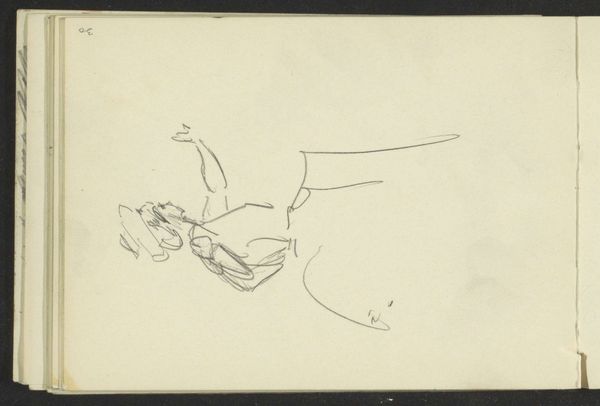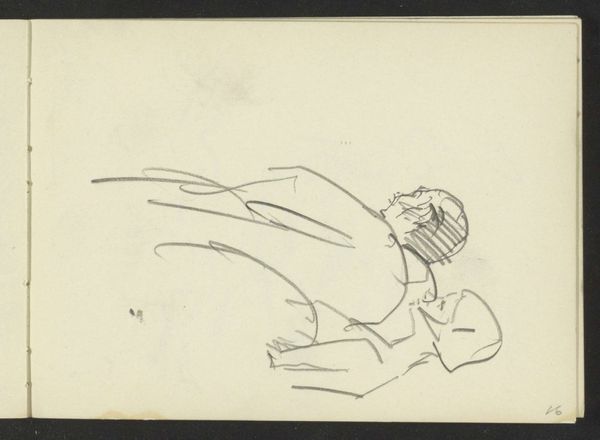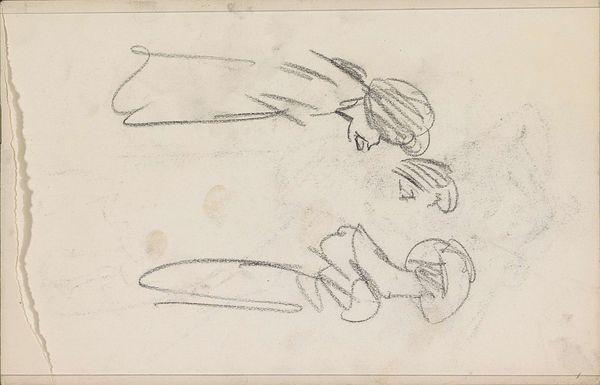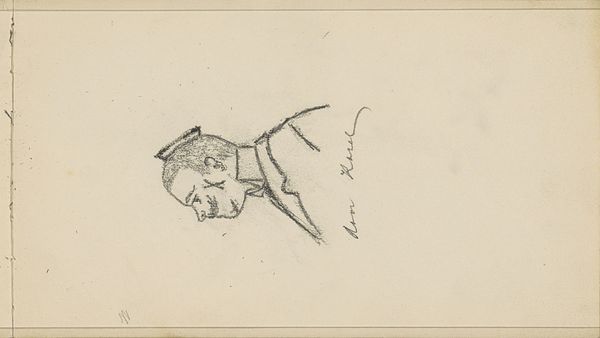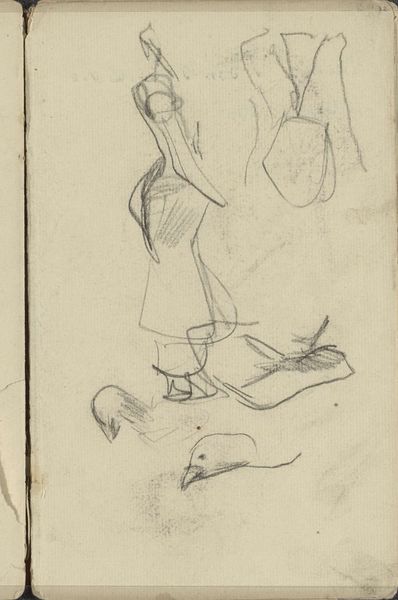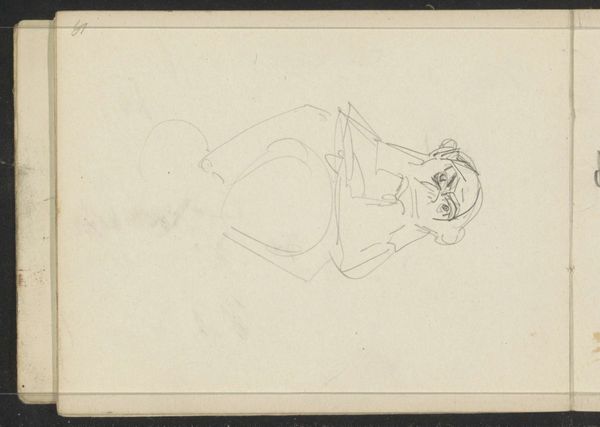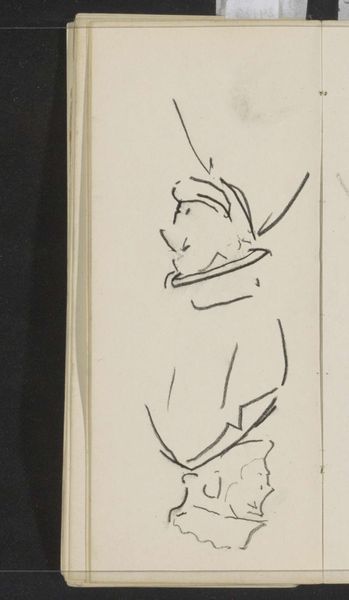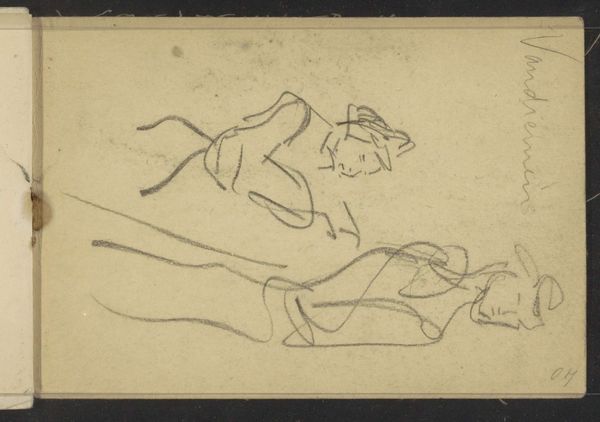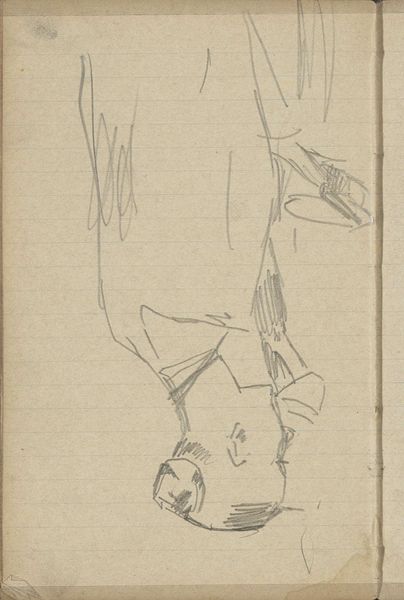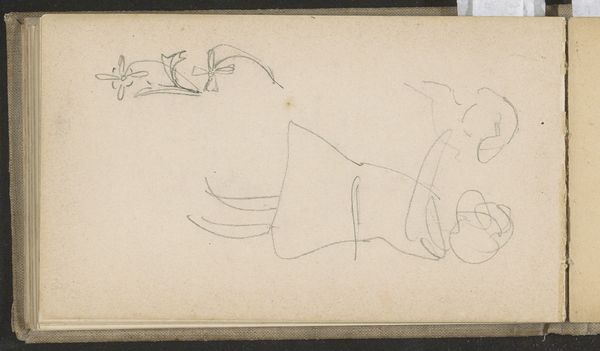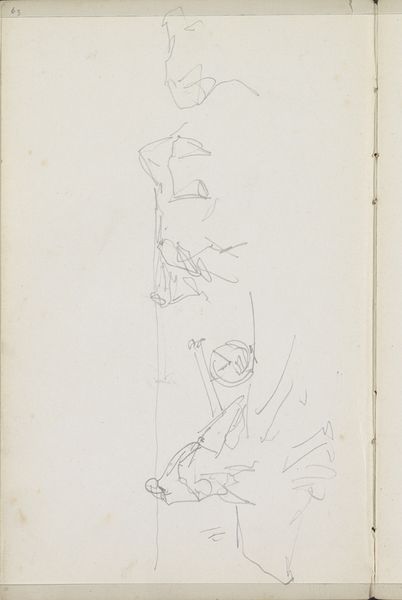
Copyright: Rijks Museum: Open Domain
Editor: We're looking at "Vrouw," a pencil drawing on paper by George Hendrik Breitner, dated sometime between 1867 and 1923, currently held at the Rijksmuseum. It’s a very quick, almost gestural sketch of a woman, and I’m struck by how informal it feels. What stands out to you when you look at this? Curator: Breitner’s “Vrouw” provides a window into the social context of art production at the turn of the 20th century. He captures a fleeting moment, an everyday woman in what appears to be a private, unposed setting. It challenges the established norms of portraiture seen in academic settings that prioritize formal representation and elevated subjects, what do you think about that shift in subject? Editor: That makes sense. The sketch definitely doesn’t feel “official”. I see what you mean about the subject having less importance. But I think this contributes to its authenticity and almost captures the mood of that time period! Curator: Precisely. And consider how museums like the Rijksmuseum shape our understanding of art. By including this sketch, it legitimizes impressionistic styles that were previously seen as lesser and incorporates images of everyday people into their historical representation of culture. It expands the narrative of who is deemed worthy of artistic representation. Editor: It’s interesting to consider how something as simple as a sketch can hold so much cultural significance. This conversation has broadened my perspective and shows how museums have shaped art. Curator: Indeed, by acknowledging that the visual landscape is inherently shaped by institutional and cultural priorities we open up for questioning, for discussion, for change. I am going to consider that moving forward.
Comments
No comments
Be the first to comment and join the conversation on the ultimate creative platform.

